| Designation: | 2S9 Nona-S |
 |
|---|---|---|
| Manufacturer: | Motovilikha Plants Corporation | |
| Product type: | Armoured Vehicles | |
| Name: | Self-propelled mortar |
Specialists throughout the world appreciate the need to equip high mobility combat units (paratroops, airmobile and naval infantry) with a powerful artillery system that can correspond to ways of their shipment and mobility in terms of their marching and maneuvering characteristics.
This artillery system was mounted on the chassis of the BTRD updated airdropped tracked armored personnel carrier. This engineering solution was prompted by the need to drop the artillery system together with the BMD airborne combat vehicles. Primarily, it allowed these artillery systems to be dropped together with BMDs via jet parachute systems, with the crews inside the vehicles. Also, this solution facilitated their joint combat use, owing to the availability of the tracked chassis and armor plating.
TsNII TochMash's designers developed a new design-ballistic concept "cannon - round" which stood out owing to the use of ammunition with ready-made grooves on the driving band of the projectile.Constructionally, the round intended for breech-loaded cannons and mortars consists of an explosive charge in the form of a cartridge arranged on the cannon primer, with the diaphragm in its rear part resting on the tapered part of the barrel before firing. On the front part of the cartridge, the primer has elements of the locking device and the projectile with a fuze. Before firing, an explosive charge and projectile are coupled via the locking device to form a fixed round convenient for loading.
The artillery part of the system incorporates the following new elements required for firing separate loading ammunitions:
- a breechblock with plastic obturator that rams the round into the cannon barrel, which is locked by the wedge at the firing moment;
- a special configuration of the breech piece that provides for loading both modern ammunitions and finned shells;
- the use of compressed air fed from the chassis compressor to ram the round during the loading and scavenging the barrel after each shot.
The engineering improvements of the artillery part and ammunitions incorporated in the Nona-S self-propelled cannon were so successful that it was decided to continue projects to create other derivative artillery systems.
Today, Russian Armed Forces operate the following artillery systems:
- Nona-S (2S9) self-propelled tracked armored amphibious airdropped cannon ;
- Nona-SVK (2S23) self-propelled wheeled armored amphibious cannon;
- Nona-K (2B16) light towed cannon.
Apart from the aforementioned cannons the Nona-M semi-automatic breech-loaded mortar was developed (experimental pilot).
All these systems are unified:
- use similar ammunitions;
- have rifled barrels with a similar rifling configuration;
- are breech-loaded;
- fire both specially developed ammunitions with high-explosive fragmentation (HEF) projectile and HEF active-reactive projectile that features ready-made grooves on the driving bands and all ammunitions intended for 120mm mortars. Ammunitions made in Russia, Germany, France, Israel, Spain and China were also tested.
The Nona cannon is unrivaled in the world in terms of all factors determining the combat efficiency of an artillery system, including minimum and maximum firing range, stable and high consistency of fire to engage ground and air targets, sighting rate and mode of fire, powerful lethality of fragmentation and high explosive ammunitions and high maneuverability in terms of trajectories.
The Kitolov-2 guided projectile with HEF warhead and 9-km firing range is being developed for Nona cannons.
The artillery systems are identical in terms of the breech loading and ammunition ramming into the barrel. Self-propelled guns use a pneumatic drive for these purposes.
The round with highly lethal HEF projectile and propellant charge arranged on the loading device is the main ammunition intended for Nona cannons. Prior to firing a shot, the HEF projectile and propellant charge are coupled to form a fixed round convenient for loading at one cycle.
The cannon's rate of fire is 10 rounds per minute and that of the mortar is 8 to 9 rounds per minute.
The main round, designated 30F49, features a powerful fragmentation and high explosive effect. During its explosion the round produces over 3,500 fragments weighing from 0.5 to 15 grams that scatter at an average speed of 1,800 m/s.
The round fragments can penetrate an 8 mm thick armor plate at 15-20 meters from the explosion point and 12-14 mm thick armor plate at 7-10 meters. For armor plates made from light alloys the thickness penetrated is 2.5-3 times greater.
When the round is fitted with an impact fuze, it produces during the explosion a crater 2 meters deep and 5 meters in diameter in soil of average density.
The Nona-M mortar is the lightest artillery system from developed cannons that features one more advantage: in 2-3 minutes three skilled crew members can disassemble the mortar into four parts, each weighing no more than 100 kg, making it suitable to be carried by the crew. Reassembly takes the same amount of time.
This advantage allows the crew to carry the mortar to places inaccessible to self-propelled wheeled cannons, thereby enhancing its surprise combat use. The Nona-M mortar's improved maneuverability provides for its deployment on firing positions inaccessible to other types of artillery systems.
|
||||||||||||||||||||
|
|||||||||
|
|||||||||||||||||||||||||||||||||||||||
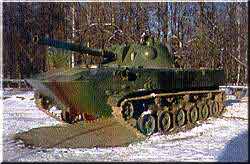 |
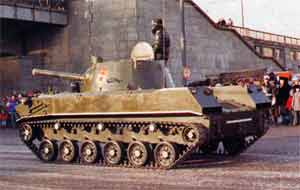 |
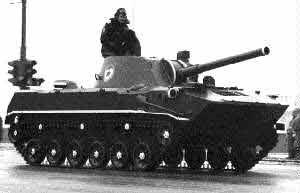 |
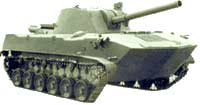 |
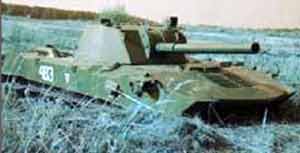 |
 |










